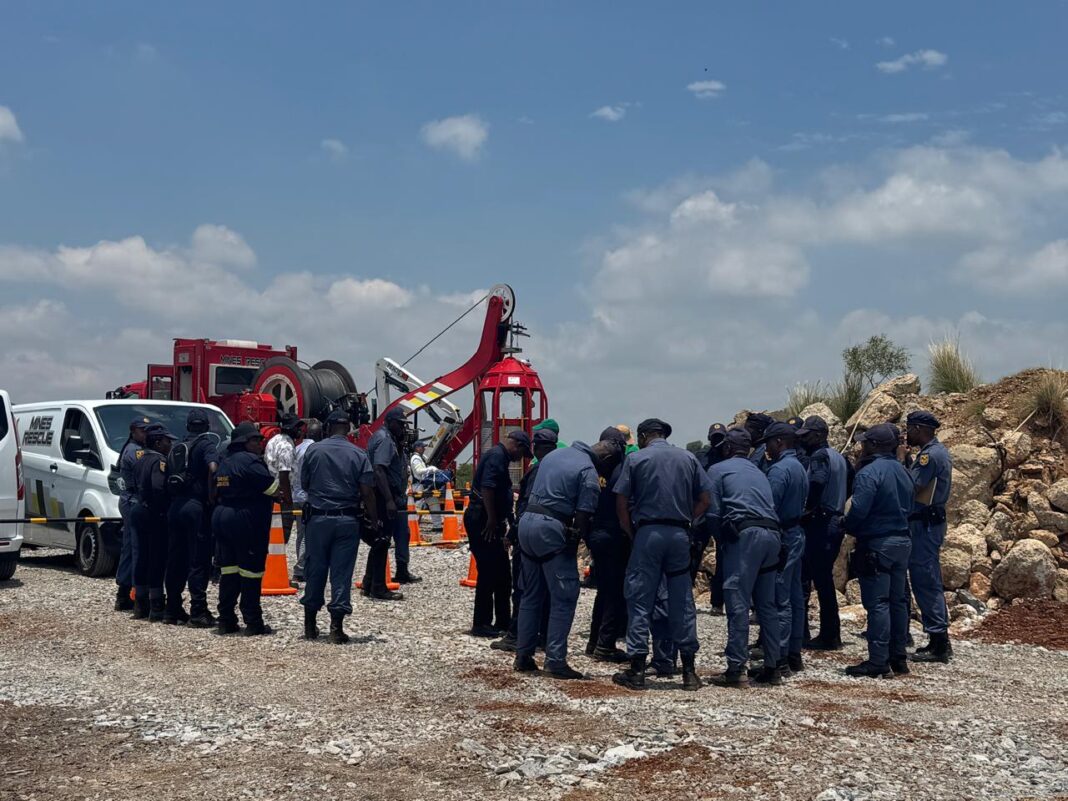By Thapelo Molefe
A total of 142 illegal miners have been saved and 51 bodies recovered from an abandoned mine in Stilfontein in the North West over the last two days.
Rescue teams have been working tirelessly since Monday.
On the first day, 35 miners were extracted, with nine confirmed dead. The second day brought both hope and sorrow as 107 miners were brought to the surface, 65 alive and 42 deceased.
The police have arrested 82 of the miners, who now face charges including illegal mining, trespassing and contravening the Immigration Act.
Two miners were further charged with the illegal possession of gold-bearing material after being caught with gold.
The National Joint Operational and Intelligence Structure confirmed that rescue operations would continue into the evening, with updates to follow daily.
Mineral Resources Minister Gwede Mantashe and Police Minister Senzo Mchunu visited the scene on Tuesday to assess the situation.
Their arrival was met with disdain from local communities and activist groups, who accused the ministers of negligence and delayed action.
Mantashe faced particular backlash for his delayed arrival in Stilfontein.
Comparing their actions to stepping onto a railway line in front of an oncoming train, he criticised public sympathy for the illegal miners.
“It’s a question of who benefits? As I said, we must give them a licence. But who do we give a licence to? Of those people, only 21 are South Africans,” Mantashe said, alleging that illegal mining was primarily driven by foreign nationals, including Mozambicans, Zimbabweans and Basotho.
He accused these groups of undermining South Africa’s economy, claiming their activities constituted a “criminal attack” on the nation.
“Please give licences to steal gold to Mozambicans, Zimbabweans and Lesotho nationals?” Mantashe rhetorically asked while addressing public calls for more inclusive policies.
“It is an attack on our economy by foreign nationals in the main.”
Activists and community leaders painted a dire picture of the miners’ conditions.
Sabelo Mnguni, of the Mining Affected Communities United in Action (Macua), described the survivors as “critically weak, unable to walk unaided,” and the deceased as showing signs of starvation.
“The state now is more critical than before. We estimate there could be over 250 bodies underground,” Mnguni warned.
Speaking on behalf of the SA Federation of Trade Unions, Memetlwe Sebei condemned the government for what he called a “catastrophe that could have been avoided”.
Sebei highlighted systemic failures in regulating the mining industry and addressing the socio-economic conditions driving illegal mining.
“This is a massacre and we hold the government wholly responsible,” Sebei said.
Activists further criticised the reliance on extractive practices that exported raw materials without local beneficiation, perpetuating poverty and inequality in mining communities.
South Africa’s mining industry faces a broader crisis, with thousands of abandoned mines across the country posing significant risks. These derelict shafts, remnants of apartheid-era practices, continue to claim lives and fuel illegal mining activities.
Mchunu urged patience as investigations into the deaths continue.
“We cannot speculate on the cause of death at this stage. A comprehensive report will be provided once relevant authorities complete their work,” the minister said.
Authorities acknowledged the challenges of identifying victims of illegal mining accidents.
One official noted the lengthy process of collecting and cross-referencing fingerprints, particularly when dealing with individuals whose identities were unknown.
“We are lucky if we do have people that know the deceased,” they stated. “But the process is still going to be quite lengthy.”
INSIDE POLITICS

